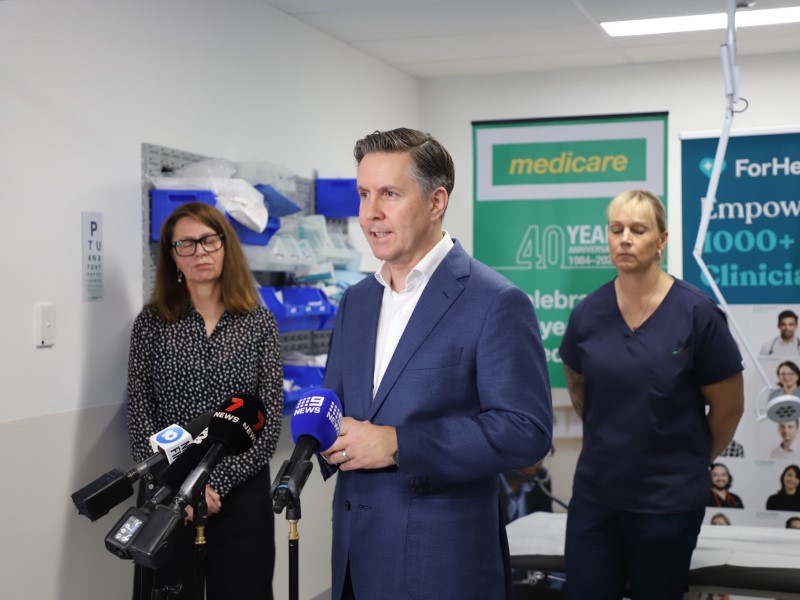New laws that will force health providers to upload pathology and diagnostic imaging to My Health Record by default or forgo Medicare payments will be introduced to Parliament next month.
In a speech on Thursday, Health minister Mark Butler said “near real-time access will be the new standard” on My Health Record, confirming the government will remove the rule that patients must wait seven days before being given access to their imaging reports.
However, “in some cases a clinically appropriate delay may remain if appropriate”, which will go some way to appeasing medical professional associations, which have argued a blanket change to the rule would create misinformation and stress out patients.
The government had initially hoped default sharing of pathology and diagnostic imaging reports would be implemented from June 30, 2024 but is now targeting mid-2025.

Mr Butler announced the proposed changes in May 2023 and consultations took place between September and October 2023. Last year’s federal Budget earmarked $13 million over two-years for work on the ‘share by default’ framework.
The seven-day delay on granting patients access to pathology results was introduced in 2014 to give follow up healthcare providers sufficient time to review results and discuss them with patients before the reports are available on My Health Record.
However, as at the start of this year, the delay has been removed for a handful of tests including COVID-19 and 13 other respiratory pathogens.
While the ‘sharing by default’ framework has yet to be finalised, Mr Butler said that pathology and diagnostic imaging companies that don’t upload the data to My Health Record “will not get a Medicare benefit for that test or scan”.
“Before agreeing an approach, I will consider advice from the Clinical Reference Group, co-chaired by former AMA President Dr Steve Hambleton and Conjoint Associate Professor Carolyn Hullick, the Chief Medical Officer at the Commission on Safety and Quality in Health,” Mr Butler told the Victorian Healthcare Week conference.
The Australian Medical Association is among the professional groups opposed to a blanket removal of the seven-day delay for patient access to pathology and diagnostic imaging reports, although they have not raised concerns regarding mandatory uploads.
Since announcing plans to implement ‘sharing by deafult’, the number of diagnostic imaging reports uploaded to My Health Record has increased from one in five to one in three.
Now, more than 10 million pathology and nearly one million diagnostic imaging reports are uploaded monthly.
“While this is an improvement, it is still too low and too slow,” Mr Butler said.
All state and territory governments are sharing pathology and diagnostic imaging reports, “with most uploading more than 75 per cent of all tests and scans, and most on track to share 100 per cent of them in coming months”.
The number of private radiology clinics connected to My Health Record has doubled, with Australia’s largest private radiology providers among those that have pre-emptively made the switch to default sharing of reports with the My Health Record.
“Australia’s largest private radiology provider, I-MED has started sharing by default from all their Western Sydney clinics,” Mr Butler said.
“In the ACT and southern New South Wales, Capital Pathology is sharing by default from every one of their clinics. The third largest private radiology provider, Lumus, is the first to share by default nationally.”
Mr Butler also confirmed that the CSIRO-led Sparked consortium – which has led recent work to develop a national set of data and exchange standards – has turned its attention to digitising “Chronic Condition Management Plans, capture the reason a patient presents for healthcare, and develop the additional data-sharing attributes”.
The Department of Health and Aged Care is also looking working on a framework for rolling out electronic medication charts beyond the aged care sector, which has seen 80 per cent uptake, according to Mr Butler.
Do you know more? Contact James Riley via Email.

